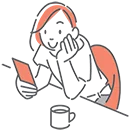 Redline, Takeshi Koike’s heady new anime feature, embraces the car culture of the West.
Redline, Takeshi Koike’s heady new anime feature, embraces the car culture of the West.
Two years ago the staff at Madhouse, one of Japan’s most adventurous animation studios, sat me down in a screening room in west Tokyo. A sequence of spasmodic images blazed across the screen: long sleek race cars burning past elaborate robots and rubber-faced aliens; mechanical ships soaring, bursting into flames and smashing into skyscrapers’and, most memorably, contorting humanoid faces with bulging eyes and curdled lips, grimacing and shrieking. The action ended as abruptly as it began: with a slashing crimson silhouette of a drag racer and a thin red band bearing the title, Redline.
The five-minute trailer soon appeared on the Internet and at successive Tokyo International Anime Festivals. Buzz and curiosity swelled. And after six years in development, Redline finally had its world premiere this summer at the prestigious Locarno International Film Festival in Switzerland.
Slated for theatrical release in Japan next April, Redline is on a growing list of 21st century Japanese-produced anime features’like Afro Samurai and the omnibus collections The Animatrix and Batman: Gotham Knight‘that deliberately target Western audiences. ‘We really want non-Japanese to see and appreciate this work,’ says Takeshi Koike, Redline‘s director and chief animator. ‘We were thinking of people who don’t normally enjoy anime or know anything about it when we came up with the ideas.’

Koike, 41, is among the few younger animation directors in Japan’s fast-aging industry. His work first garnered worldwide attention in The Animatrix‘s ‘World Record”a dizzying account of an African American Olympic sprinter whose desire to break records leads him to destroy his muscles in a surreal, Matrix-inspired climax.
‘I like the idea of finding out who’s the fastest and strongest, and it’s what I want to do when I make art,’ he explains. ‘I was watching [American sprinter] Maurice Greene in the Sydney Olympics. In real time, athletes look so beautiful and perfect. But when you slow down the footage and watch it scene by scene, you see the extreme expressions on their faces. Sometimes they’re quite ugly.’
Ugliness is subjective, of course. To veteran film director, screenwriter and illustrator Katsuhito Ishii (The Taste of Tea), Koike is ‘simply the best animator alive in Japan today, bar none.’ Ishii and Koike began collaborating a decade ago on the edgy, underground film, Party 7. ‘I want to work with him every chance I get,’ Ishii says. ‘He’s the only animator who’s able to realize and execute what I want to express.’
What Ishii wanted to express in his script for Redline is a story that speaks to the hinterlands’specifically, to rural Americans. Several years ago he stayed with a friend in the flatlands of the American Southwest and discovered a phenomenon jarring enough for an urbanite to take notice: Unlike residents of New York or Los Angeles, rural Americans spent their weekend hours lovingly washing, polishing and endlessly tinkering with ‘ their cars.

‘I call them car ‘maniacs,” he says, laughing. ‘They’re really in love with their automobiles, so I wanted to create a story that featured really cool cars and fast action’an animated film that wouldn’t necessarily be for urban Americans, who already know about anime, but might be attractive to people in the countryside.’
The result is a film that piles hybrid upon hybrid’a racing movie that blasts into sci-fi apocalypse, as a corrupt alien government seeks to destroy the drivers who dare to compete on their planet. At the still center of the heady overdrive is, improbably, a kind of love story. The very human JP, the story’s protagonist, is a ‘regular, average racing car guy with greased back hair,’ says Koike. ‘He’s no one special, but he wants to win. And then he falls in love.’ The object of his affection is Sonoshee, a childhood flame who has grown into a cute, well-endowed blond babe and a fearless competitor with a penchant for speed. As the two lovers join forces near the film’s explosive, world-ending climax, Koike and Ishii seem to take the term ‘finish line’ literally.
‘Koike’s a genius,’ Ishii says. ‘And geniuses take things to extremes.’
Roland Kelts is an acclaimed author, journalist and anime expert. He is the author of Japanamerica: How Japanese Culture Has Invaded America (Palgrave Macmillan).



 Win a Funko X Lilo & Stitch Prize Pack!
Win a Funko X Lilo & Stitch Prize Pack!

